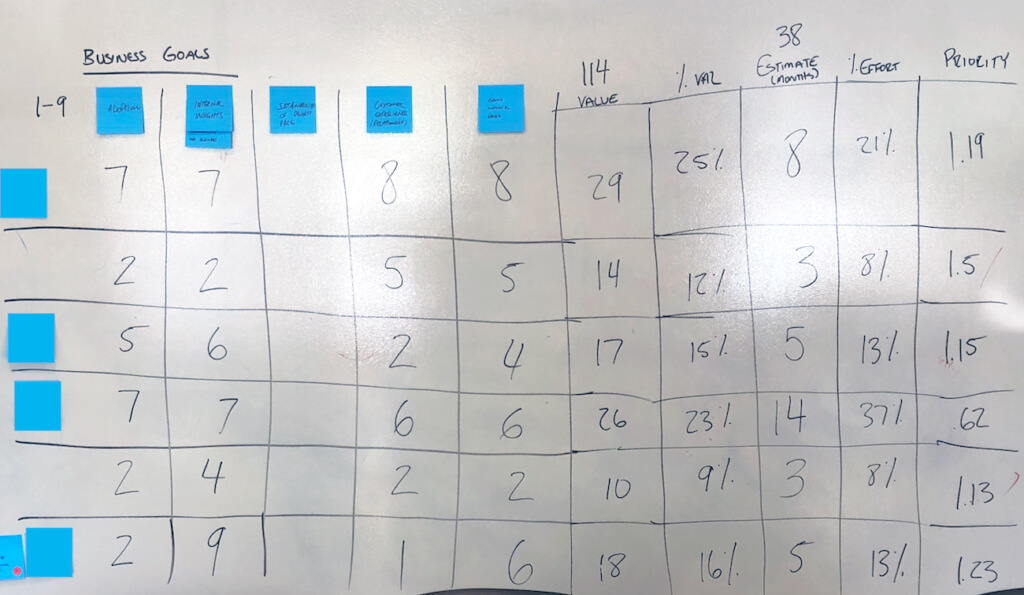I was recently working with a client that was considering many different software projects and struggling to decide which should come first. Each project was valuable in its own way, but when we began comparing them, we weren’t getting far. Then, I remembered an exercise that I did during my Scrum Product Owner training called relative weighting.
Typically, relative weighting is used to prioritize features based on complexity and value. In my case, I decided to zoom out and use the same tool to prioritize entire projects.
We started by identifying the projects that our client was considering. There were four candidates.
Then we asked them to identify four goals that they’d like to focus on over the next year. They identified these objectives:
- Increase user adoption
- Gain internal insights
- Increase customer experience
- Grow sales
Next, we drew a giant table on the wall. The first four columns were their business goals, and there was a row for each of the projects. The stakeholders had to determine how much each project impacted their business goals on a scale of 1 to 10. The values were written at the intersection of the goal and project.

This exercise forced them to think critically about how each project benefited the company, and it created an apples-to-apples comparison of the projects. We could finally have a discussion about how Initiative A was much more beneficial to increasing sales than Initiative B.
Once we had a number assigned to each project for all of the business goals, we calculated each project’s total value and percentage of value.
Then, we gave (very) rough estimates on the effort to complete each project, in months. We totaled up the efforts and calculated the percentage for each project.
Finally, we divided value percent by effort percent to boil everything down to a single number. The highest number was the most valuable project, and the lowest number was the least valuable.
Here’s our completed table with identifying information blurred out:

Our client wasn’t exactly thrilled that the project they’d planned to complete last ended up with the highest number. We decided that although there were four business goals, they weren’t all equally important. So, we gave 2x points to every number in the “increase customer experience” category and reassessed. One of the more promising candidates became the highest number, and that’s the project we decided to pursue.
The other interesting observation I made was that the same project finished with the lowest score in both exercises. That particular project was valuable, but the complexity and effort greatly outweighed its value.
Overall, using the exercise at a level higher than feature sets was a great success. It forced key stakeholders to discuss the relative value and effort of each initiative with the same company goals in mind. It also gave them the information they needed to make an informed and confident decision. I would highly recommend trying this exercise if you, too, are struggling to decide what project to tackle next.

